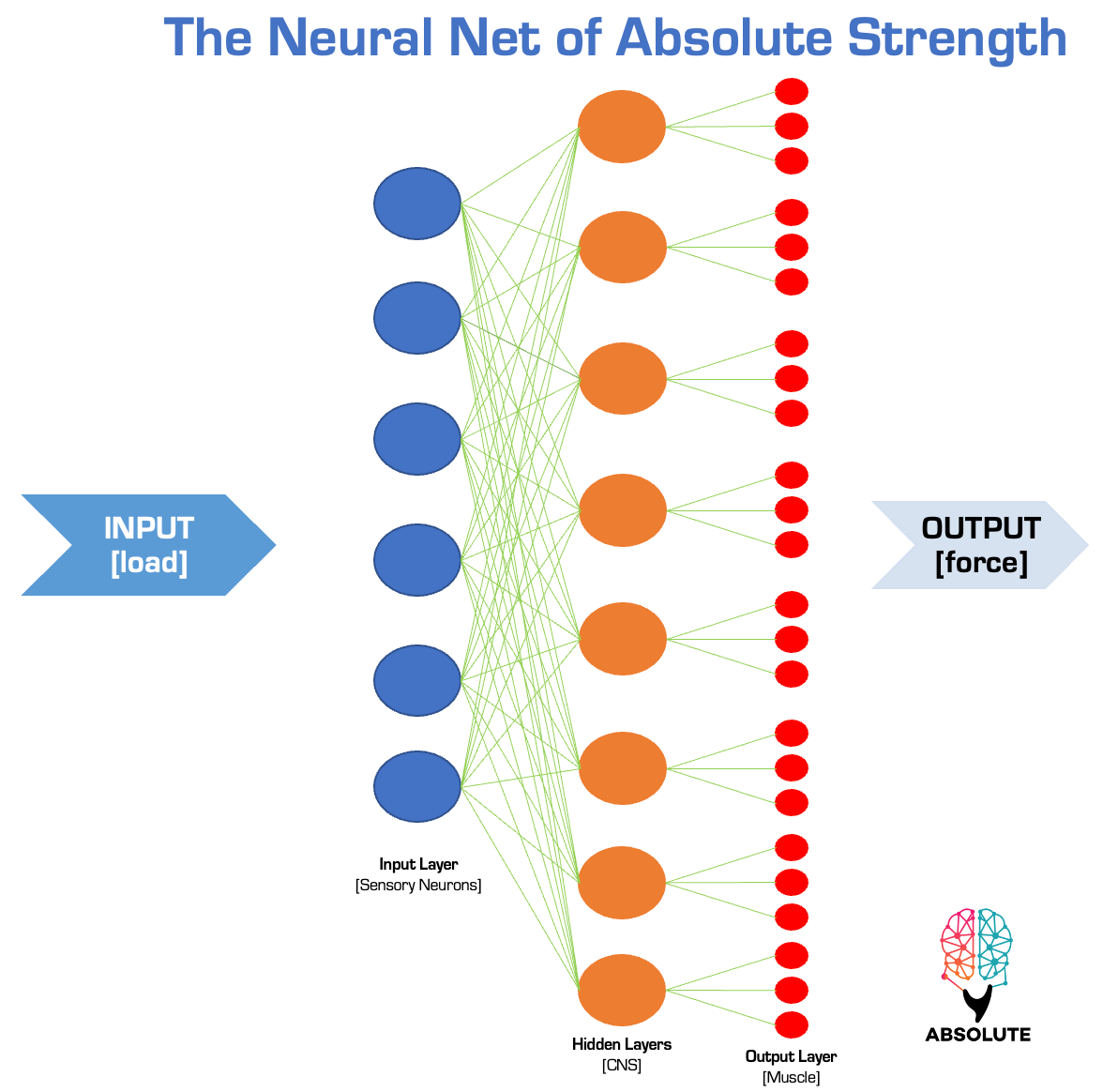The Hidden Layer of Tightness
We’ve discussed two key concepts: neurological tightness and the neurological network of absolute strength. Now, we’re going to use these frameworks as feedback loops and apply them to a real-life case of chronic hamstring tightness.
Neurological Tightness: The output of protective spasm/tightness—a limiting behavior where the hidden layer of the nervous system generates force to resist lengthening. It presents as involuntary contractions (spasms/tightness) when the tissue is moved toward length.
Neurological Network of Absolute Strength: A multi-layered system responsible for generating force output (strength). Its hidden layer is both trainable and treatable, and it governs the expression of neurological tightness.
In this case, we’ll demonstrate how, when neurological tightness is present, the key clinical intent is to engage directly with the hidden layer of the neural network to dampen its output.
Case Background
The individual presents with chronic (months-long) hamstring tightness, complaining of pain at the proximal attachment—specifically the ischial tuberosity. The discomfort is so pronounced that when seated, she has to lean to the opposite side to unload the tight hamstring. She even experienced this during the car ride over. At night, the hamstring must stay in a shortened, protective1 position; otherwise, it disrupts her sleep.
She’s been under the incorrect assumption that this is a connective tissue problem. So she’s been Grastoning, stretching, and foam rolling. These passive modalities provide brief distraction from the pain while she’s doing them—but afterward, the tightness and symptoms come back even more amplified.
Who would’ve thought that taking a butter knife, giving it a fancy name like the Graston tool, and then going ham on a neurologically tight hamstring—calling it "therapy"—might actually amplify the neurological tightness?
Biological Inputs, Neurological Problem: Why Tightness is Amplifying
When we analyze this case through both neurological and biological lenses—and overlay the law of specificity as a physical assessment feedback loop—the real problem becomes clear:
She’s been treating a neurological tightness problem as if it were a biological connective tissue tension problem.
For months, she’s been Grastoning (whether that’s a word or not—doesn’t matter), stretching, and foam rolling her hamstrings, thinking these inputs would resolve the tightness. But after physical assessment, it became evident: the real problem lies within the hidden layers of her neural network—not her connective tissue network.
Understand: tightness is a protective neurological behavior—a neural network output—in response to tissue length. This is something we can, and do, physically assess every time we take tissue to length. You can see the spasm as we attempt to passively lengthen the hamstrings—clear, involuntary contractions. The video shows exactly how this protective neural output disrupts any attempt to assess hamstring tissue moving toward length.
Clinical Strategy of Action: Engage the Neural Network
Listen to this episode with a 7-day free trial
Subscribe to Absolute: The Art and Science of Human Performance to listen to this post and get 7 days of free access to the full post archives.












